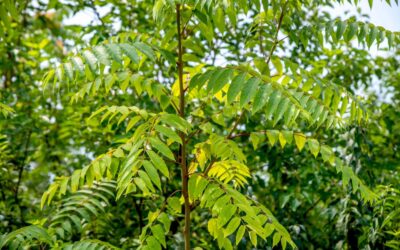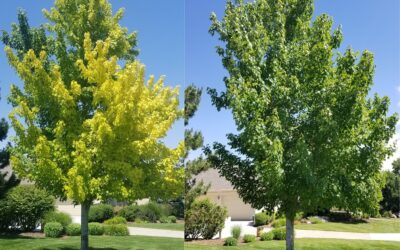Native Range
Boxelder maples are native to North America and were introduced as a landscape tree in northern Europe, where it is sometimes considered invasive. It has also naturalized in eastern China and cooler areas of Australia where it is also considered invasive.
While most commonly found in North America between the Great Plains and the Appalachians, native boxelder growths are also scattered throughout temperate mountain areas of the western US, including river basins along Colorado’s Front Range and mountain valleys.
Archaeologists have discovered boxelder wood used in flutes in Anasazi settlements dating back to the 7th century.
Characteristics
The boxelder is a medium-size, medium-growing deciduous tree that can reach heights of 50 feet with trunks around 12 inches in diameter. It prefers full sun and has moderate water needs. Young trees begin with a single trunk but as the tree grows the trunk can split into several secondary trunks. It is hardy to -30°F at elevations up to 9,000 feet.
The bark of boxelders is pale grey=brown with vertical ridges on younger trees, becoming darker and furrowed as the tree ages. Unlike other North American maples, boxelders have compound leaves up to 10 inches long with 3-7 leaflets. They flower briefly in spring and produce seed pairs in familiar “helicopter” samaras that drop in the fall. The leaves are translucent green and turn to yellow, orange or red in fall depending on the subspecies.
Magpies prefer to nest in boxelders and other birds as well as squirrels, chipmunks, and mice feed on the seeds.
The Boxelder as a Landscape Tree
The boxelder maple has both pros and cons as a landscape tree. It grows quickly as a young tree, and its rounded shape make it a good shade tree. Some varieties, like the Sensation boxelder, turn a brilliant red in the fall, adding color to otherwise drab landscapes.
On the other hand, its prolific seed pods can litter a lawn and it is notoriously home to boxelder bugs, a half-inch grey insect with red stripes. The larvae feed on the soft parts of the tree and develop into adults that seek warm places (like houses and garages) as the weather turns cold. While common in warmer areas, rosy maple moths are not a serious threat to the tree, they can be a nuisance, resulting in partial defoliation, diminishing the tree’s attractiveness.
Because of its size, the boxelder can be planted in areas where other shade trees may be too large.
Donovan Arborists offers planting, and trimming services for boxelder maples and other trees and shrubs as well as a complete landscape maintenance package for property in the Denver area.
We’re always happy to give free estimates to homeowners and property managers for any services they may need.



